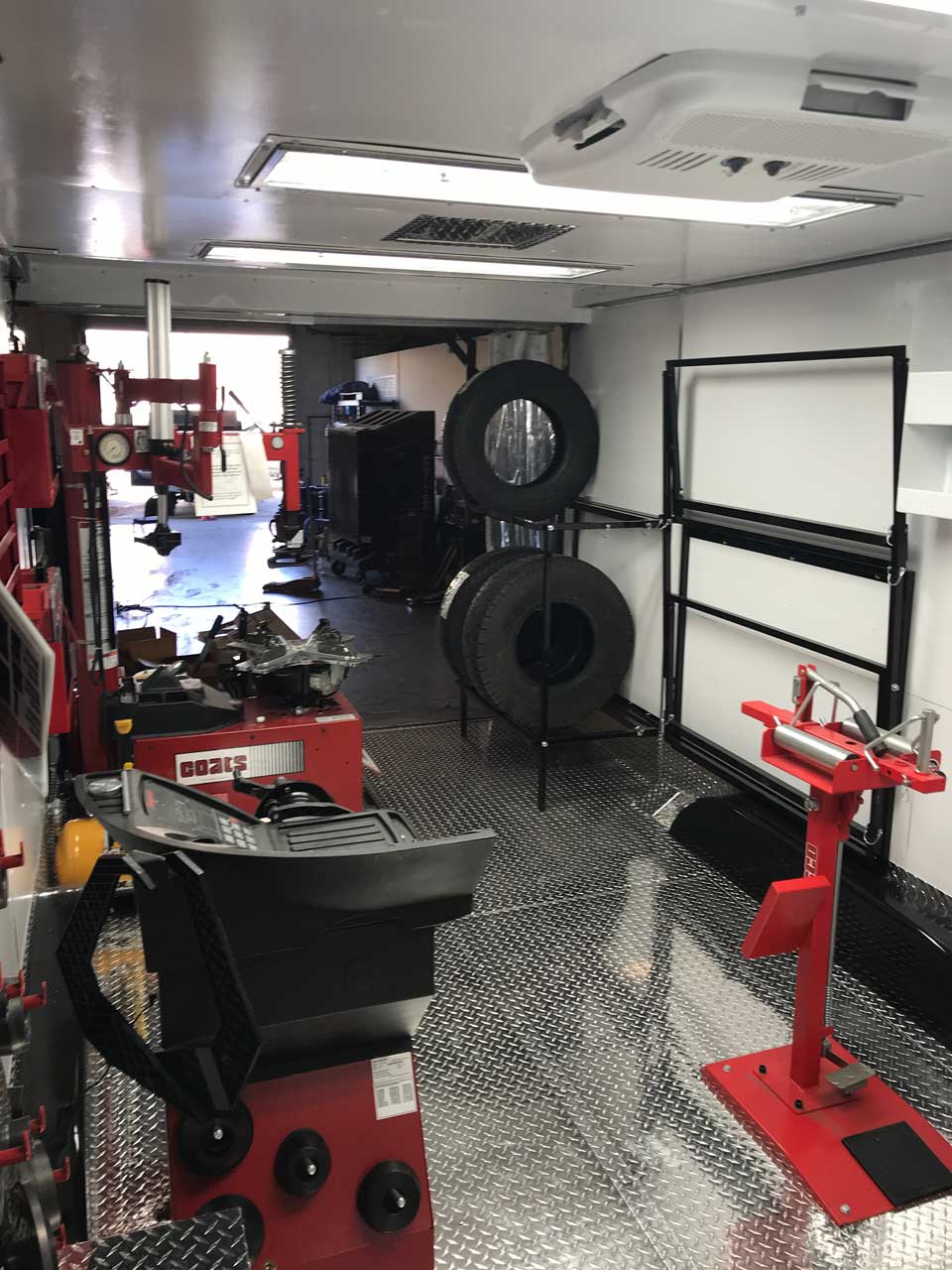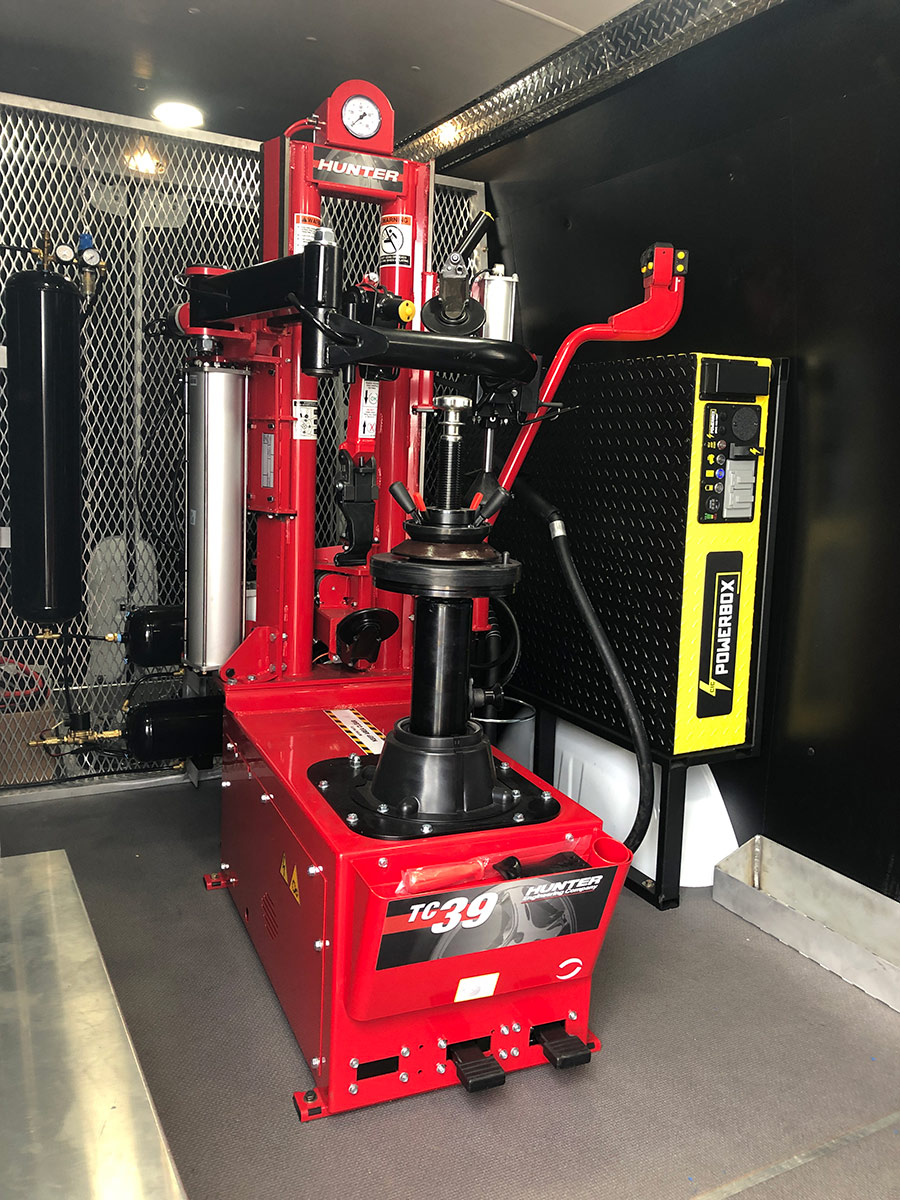Tire Solution: Proven Methods for Optimal Tire Upkeep and Care
From guaranteeing appropriate tire stress to regular rotation and alignment, there are tested methods that can substantially expand the life-span of your tires and enhance general driving experience. Allow's dig right into the world of tire solution and find the keys to maintaining your tires in first-class shape for the long haul - Flat Tire Repair Las Vegas.
Relevance of Tire Stress
Proper tire pressure is a crucial consider making certain ideal car efficiency and safety when traveling. Keeping the recommended tire stress levels provided by the producer provides numerous advantages. Sufficient tire stress advertises much better gas efficiency, as under-inflated tires can lead to increased rolling resistance, triggering the engine to function tougher and eat more fuel. Proper tire pressure makes certain even walk wear, improving tire long life and saving money in the long run by delaying the demand for early replacements. In addition, properly blew up tires add to boosted handling and braking capabilities, crucial for risk-free driving in various road conditions. Over-inflated tires, on the other hand, can result in lowered traction and a harsher adventure. On the other hand, under-inflated tires are vulnerable to getting too hot, which can lead to blowouts and mishaps. Regularly examining and changing tire pressure, specifically eventually trips, is a straightforward yet reliable means to enhance automobile efficiency, extend tire life expectancy, and prioritize safety and security when traveling.
Tire Turning Standards
When taking into consideration tire turning standards, it is necessary to recognize the value of this maintenance job in maximizing tire life-span and keeping optimal lorry efficiency. Tire turning includes altering the placement of each tire on an automobile to make sure also step wear. Front tires have a tendency to put on faster than back tires because of steering pressures, making regular rotation critical for balanced wear patterns. The advised rotation pattern differs relying on whether a car is front-wheel, rear-wheel, all-wheel, or four-wheel drive. Generally, tires ought to be turned every 5,000 to 7,500 miles, or as advised in the automobile guidebook. Ignoring tire rotation can lead to unequal wear, impacting handling, grip, and potentially compromising car safety and security. By adhering to correct rotation standards, vehicle drivers can extend the life of their tires, enhance fuel performance, and improve general driving experience. Regular turning is an easy yet efficient upkeep practice that contributes dramatically to tire long life and lorry efficiency.

Benefits of Wheel Positioning
Making sure proper wheel placement after tire turning is essential for preserving balanced wear patterns and optimizing automobile efficiency. In addition, proper wheel positioning assists to expand the life expectancy of your tires. Misaligned wheels can trigger unequal tire wear, leading to early tire replacement and increased maintenance prices.

Tire Tread Deepness Inspect
Doing a regular assessment of tire step depth is necessary for keeping risk-free driving problems and extending the lifespan of your tires. Irregular step wear can indicate issues with tire suspension, placement, or stress, highlighting the importance of routine step deepness checks. By integrating tire step deepness checks right into your regular upkeep timetable, you can drive with confidence recognizing that your tires are in leading problem.
Seasonal Tire Inspection
A thorough evaluation of tire condition tailored to specific climate condition is crucial for preserving optimal performance and safety and security throughout the year. Seasonal tire assessment is an essential facet of tire upkeep that makes sure tires are ready to face the challenges positioned by different weather conditions. To prepare for wintertime, it is vital to examine the tire stress routinely as cool temperature levels can create tire pressure to go down. Inspecting tire walk deepness is likewise essential to ensure adequate traction on snow and frozen roads. Additionally, looking for signs of deterioration, such as fractures or bulges, can aid avoid possible tire failings. As the seasons change, it is necessary to analyze tire problem and make any kind of required changes to guarantee risk-free driving. By carrying out routine seasonal tire examinations, drivers can lengthen tire lifespan, enhance fuel efficiency, and most notably, ensure a secure driving experience in differing weather - Mobile Tire Change Las Vegas.
Verdict
To conclude, keeping appropriate tire stress, rotating tires consistently, aligning wheels correctly, checking step deepness, and carrying out seasonal assessments are important practices for ideal tire care. By complying with these proven approaches, motorists can ensure their tires last much longer, perform better, and add to check my source overall lorry security. It description is necessary to prioritize tire upkeep to avoid crashes, improve fuel effectiveness, and lengthen the lifespan of tires.
Appropriate tire pressure advertises far better fuel effectiveness, as under-inflated tires can lead to increased rolling resistance, creating the engine to work more challenging and eat even more fuel.When thinking about tire turning guidelines, it is vital to comprehend the importance of this upkeep job in making the most of tire life expectancy and keeping optimum car performance. Seasonal tire inspection is a basic facet of tire maintenance that makes certain tires are prepared to encounter the obstacles posed by different climate problems. By carrying out routine seasonal tire evaluations, vehicle drivers can prolong tire lifespan, enhance fuel efficiency, and most importantly, guarantee a safe and secure driving experience in differing weather condition problems.
In conclusion, keeping correct tire stress, revolving tires consistently, straightening wheels appropriately, keeping an eye on walk depth, and conducting seasonal inspections are essential techniques for ideal tire treatment.